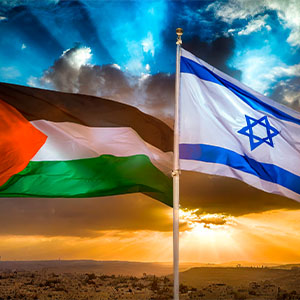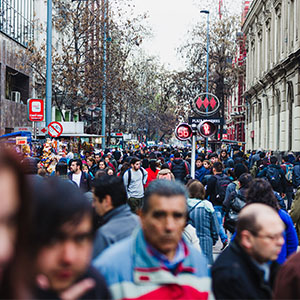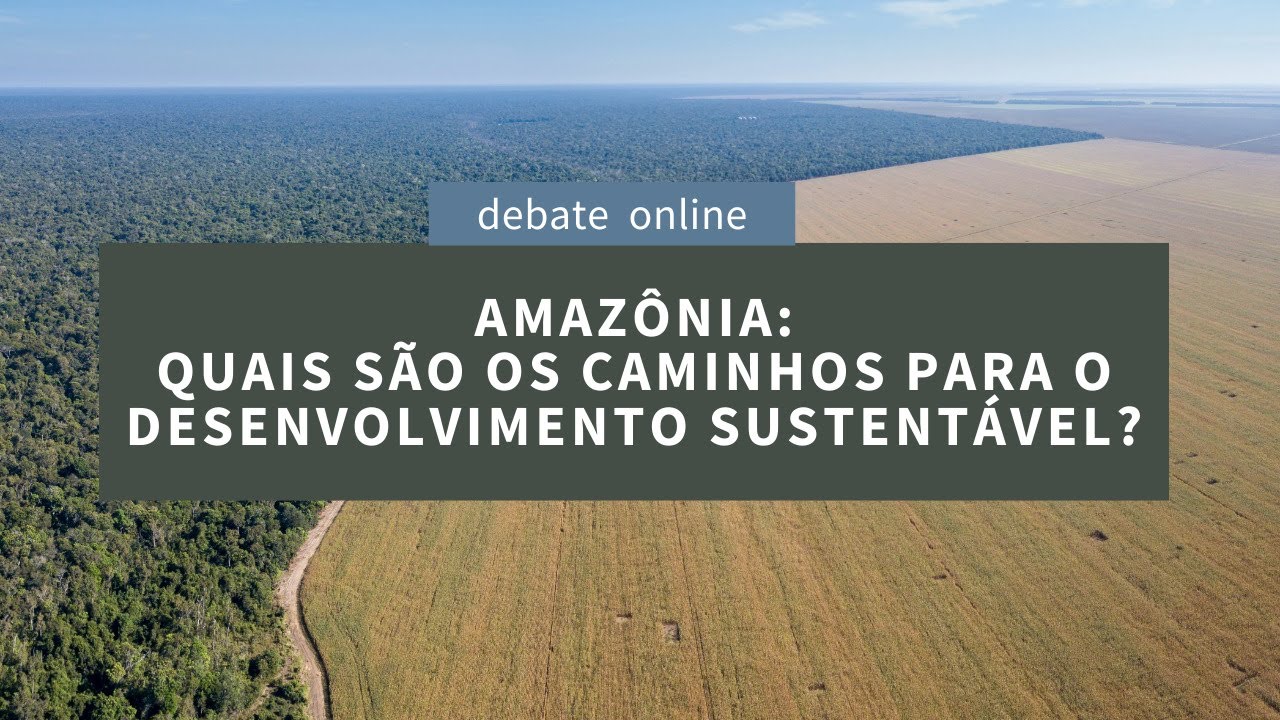The preservation of the Amazon Rainforest is on center stage in debates inside and outside Brazil. The Amazon biome covers about 40% of Brazil's national territory and is known for fulfilling essential climatic functions. The Fernando Henrique Cardoso Foundation invited two scientists to debate this relevant topic, challenging them to explore possible pathways for sustainable development in the region. Alfredo Homma, agronomist with a doctorate in agricultural economics and researcher at The Brazilian Agricultural Research Corporation of the Eastern Amazon (EMBRAPA Amazônia Oriental), and Carlos Nobre, climatologist and collaborator-researcher at the Institute of Advanced Studies of the University of São Paulo (IEA-USP) both presented this webinar.
Nobre: “The Amazon is very close to the tipping point"
Climatologist Carlos Nobre started his presentation by warning that the Amazon is approaching the tipping point: “Fifty years ago, when the military dictatorship expanded into the Amazon, the rainforest itself did not enter the picture; it was only seen as an area to expand the developmental model of agriculture. In the 1990s, I created what was still a hypothesis back then, that of 'savanization', which warned that if we deforested the Amazon rainforest, large areas would become savannah and would never be forest again. And now, we are already seeing a series of very worrying signs pointing in that direction."
Nobre explained that this phenomenon occurs because, although 86% of the Amazon soil is very poor, in tens of thousands of years of evolution, the forest has developed a very efficient system for recycling water and nutrients. That is why it is so rich in biodiversity, biomass, and carbon. However, if we deforest the Amazon, we end this complex system. "The Amazon Rainforest only exists because the forest exists," said the climatologist.
Can we avoid this tipping point? This question prompted Nobre to begin the development of the Amazon 4.0 Project back in 2017. “It is a human choice. Which path will we take? The dystopian path, continuously increasing in deforestation, which is what we have observed in recent years, primarily 2019 and 2020; or the utopian path of zeroing deforestation and restoring a good part of the forest, mainly with agroforestry systems, absorbing carbon, and reducing the risk of that tipping point? It is up to us to decide."
In the last few decades, we have seen two distinct outlooks in the national debate regarding the conservation of the Amazon rainforest. The "first pathway" would be to completely isolate large areas of the forest, aiming to conserve it. The "second pathway" defends a development model that includes monoculture agriculture, extensive cattle ranching, and mining in already-deforested areas between the Cerrado and the edge of the Amazon. Both paths have common opinions and seem irreconcilable.
This dichotomy gave way to a "third pathway" called "Amazon 4.0". This path would represent an opportunity to develop a green economy that would take advantage of the forest and its biodiversity and, with the help of fourth industrial revolution technology (or industry 4.0), establish a model of modern and socially inclusive economic development.
The "Amazon 4.0" Project, according to Nobre, is a new paradigm of sustainable development. "It is creating from scratch," he explains, as there is no developed tropical country based on this model. We could lead through the project, using bio-industrialization linked to modern technology—the internet of things, communication networks, artificial intelligence. This model has deep roots in the Amazon and does not see the place as only soil for extracting and producing primary commodities to be exported. "It is a fusion of idealism, realism, and innovation," summarizes Nobre. Read the article “Amazon 4.0 Project: Defining a Third Way for the Amazon”, written to and published by the magazine Futuribles em Português nº 2, September 2019.
Homma: "We need to step it up and not depend on futuristic proposals"
Alfredo Homma opposed Nobre's proposals: "I would like to draw attention to many of these proposals that have been recently put forward, with bioeconomics, standing forest, and plant extraction, in which I see great limitations," added the agronomist.
Homma cited an article he published in Veja magazine in the 1990s. He argued that plant extractivism can be positive on a small scale but cannot support the increase in the market and, consequently, in demand. He explained that many Amazon extractive products have already reached their limits, such as Brazil nuts, rosewood, and bacuri (grown for its fruit).
The agronomist defended perennial crops as a great opportunity. He explained that agriculture without deforestation and slash-and-burns in the Amazon is possible, provided it is accompanied by an increase in productivity, technological advances, and promoting the forest transition.
One mistake Homma sees in the Brazilian environmental policy is the lack of use of areas that have been destroyed in the past. We have already deforested 18% of the legal Amazon, so using a fraction of that area would be enough to open the possibility of alleviating pressure and mitigating future damage. “The forest will still burn for a long time. Whether it will be three, four, or fifteen years will depend on the technological alternatives that we need to adopt now. So, we need to step it up and not rely on futuristic proposals," warns the EMBRAPA researcher. But what proposals would these be?
The first proposal would be to work intensively on cattle ranching, which is already happening in 61% of the deforested area in the region. This sector would need to undergo a technological shock, ensuring a recovery of 10% of pastures per year, in order to avoid pressures to occupy the dense forest. "The idea is to reduce pastures by increasing productivity," argued Homma. Other short-term proposals presented by Homma include doubling the current reforestation area and perennial crops, encouraging fish production, accelerating the environmental transition, and curbing illicit activity, first to try to end illegal deforestation (which represents more than 90% of the deforestation in the Amazon) to subsequently end legal deforestation.
Can we reconcile both proposals?
Although they both believe it is viable to develop the Amazon, Carlos Nobre and Alfredo Homma presented differing proposals.
Nobre agrees with the need to increase the scale and quality of production in the Amazon but criticized that Homma's proposal focused on monoculture and spoke nothing of agroforestry. "Any monoculture adopted in the Amazon, be it cocoa or any other, will increase deforestation. I believe the region can be economically explored while maintaining biodiversity with profitability and scale. The difference between monoculture and agroforestry systems is based on a basic principle: the forest has evolved with biodiversity," concluded the climatologist.
"We need to fight the romantic view of agroforestry systems (AFSs)," countered the agronomist, arguing that many existing AFSs are uneconomical and would take years to be ready: “an AFS is not assembled at the snap of a finger; it takes 10 or 15 years to set it up and make it profitable. There is no magic solution for the Amazon region."
Homma argued in defense of immediate measures to stop deforestation and slash-and-burns and added that, in the proposal of the scientist/colleague, there is still uncertainty about the 750 thousand small producers in the Amazon. "Belém and Manaus are unjustified in buying up to 75% of the fruits and vegetables they consume from the South and Southeast when they could produce them locally and generate jobs. Agricultural productivity in the Amazon is very low. We need to level all producers, improving technology, for example, to make a leap. This would reduce the pressure on forests," he concluded.
Regarding the time to implement regenerative AFSs, Nobre pointed out that transformation in the 4.0 era no longer takes decades, but years. His model aims to start bio-industrialization in the Amazon, "which will not be done in one day, but it does need to start." He cannot possibly imagine a developed country without industrialization, and in the Amazon, it should be no different. “We need to create better job opportunities for young people in the Amazon, for more than agriculture. And 4.0 technology can make that possible."
Isabel Penz is a historian who graduated from USP and serves as an assistant study and debate coordinator at the FHC Foundation.
Portuguese to English translation by Melissa Harkin & Todd Harkin (Harkin Translations).











